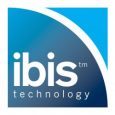A customer service strategy that includes digital components like chat reduces the cost to serve each customer while simultaneously making support easy and effortless for customers.
Tourism businesses harnessing the power of digital technology to support their in-house customer service team are reaping the benefits in terms of more sales, and big leaps in staff efficiency.
We now live in a digital era, where information is available at travellers’ fingertips. They can book immediately using your IBIS instant availability booking system… but, a percentage of website visitors still have questions that need to be answered immediately, otherwise it is a barrier to them booking.
Today’s travellers expect immediate answers and tourism businesses that make customer service available 24/7 using digital tools. These businesses are winning more bookings, and delighting their customers.
Yonder research shows that a whopping 40% of tourism chat enquiries come outside office hours. If your business has no mechanism to interact with customers after 5pm, you’re missing out on bookings.
Make sure you have systems in place through chat, email, phone and in-person to provide the best customer service you can. Every operator knows that great customer service equals more bookings, so here are some tips to get you started on the digital customer service path…
Email remains a well-used method of communication worldwide. It is a format that everyone is familiar with and trusts. The number of consumer and business emails sent per day in 2018 was more than 281 billion (Radicati Group), so customer service via email needs to be a priority for all tourism businesses.
Top tips:
- Use a contact us form on your website. Although it still sends an email, you can apply a filter to your inbox to send emails to a certain folder, which you can prioritise. You could even go to the extent of removing your email address from your website to force people to use the contact form!
- Maintain a tidy inbox and keep it clean with just unread emails. Once you’ve responded to an email, move it out into another folder, which keeps your focus on things to be done.
- Short responses are better than late responses.
- Use different email addresses: one for customers to contact you with, and another to use for admin, suppliers and so on.
- Forward your customer emails to a CRM system like Hubspot or Freshdesk. These systems give customers’ tickets and help you be methodical managing the conversations.
- The last piece of advice, is very basic to set up, and is very effective: set up an automated response for incoming emails. The email could say something like: “Hey, thanks so much for getting in contact with us. We’ll get back to you as soon as possible during opening hours, 9 -5 Mon to Fri.” You could also include a link to something cool, or tell them why you are the best and why they should wait for you to get back to them!
Chat
Multiple studies show chat (like Facebook Messenger and WhatsApp) are the preferred way consumers want to communicate with businesses because of convenience, speed and accessibility. Many now choose not to ring. This article Why consumers want to chat shares some interesting insights into this trend.
All tourism operators need to be actively engaging through chat, which is why IBIS has created an integration with the world’s leading tourism chat tool, Yonder. Why? Because you can communicate with your customers in real-time and give your customers the immediate answers they want, so that they can go ahead and book. The process of offering automated answers to customer enquiries saves hundreds of hours a month for customers like Black Cat Cruises and Polynesian Spa. Many consumers now don’t want to ring, so if they’ve got questions and you don’t have chat, you could be losing customers without knowing it.
Top tips
- You need to respond quickly. If you take longer than five or even 15 minutes that potential customer could have found something else to do.
- Don’t put up barriers to chat, like collecting email or names to begin chatting. Yonder’s experience shows this puts people off contacting you… in fact only 35% of people will contact you compared to a tool that allows instant chat.
- Put a chat widget on your website. There are some free ones out there or check out Yonder’s tourism specific chat tool which automates up to 80% of your FAQs, you can check it out in action on Black Cat Cruises and Polynesian Spa.
Chat doesn’t have to be overwhelming, or a drain on staff time – instead it can be the digital backbone of a great customer service approach.
Phone
Phone is a communication channel that operators still favour. Part of this is due to the fact that it requires less time to talk with someone than to sit and write a reply in email. Phone also allows an easier flow of conversation and gives a very personal experience for tourists. Google also states that it’s still the most popular button for people to click on in google search results!
However, there are a number of downfalls with a phone system: when you are talking on the phone you are unable to serve customers, unlike chat channels which can deal with multiple customers at once. Also, many phones go unanswered after office hours, yet Yonder’s data shows that 40% of chat conversations come outside office hours.
Top tips
- Use a call centre, although there are disadvantages to that as well, such as staff competency and cost. It can cost $4 per call received, and training of staff may not be the same standard as your team can deliver.
- Use a callback system, which means that a customer doesn’t have to wait on hold.
- Use a call system, which you can place people on hold and use it as an opportunity to build your brand story. A great example of this used well was something I experienced recently at Canopy Tours Rotorua. When I was placed on hold, they played bird sounds that you hear while ziplining with them. It was fantastic and made me smile!
- Extend the hours you respond to the phone, for example a duty phone for the evenings.



